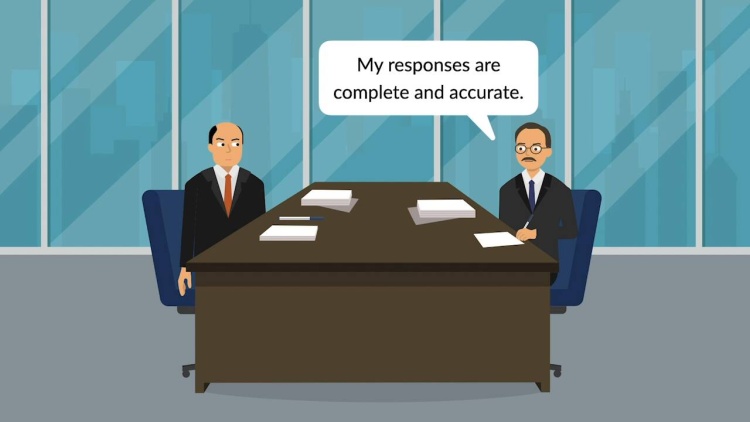United States v. Yermian
Supreme Court of the United States
468 U.S. 63, 104 S.Ct. 2936, 82 L.Ed.2d 53 (1984)
- Written by Samantha Arena, JD
Facts
Yermian (defendant) was hired as an employee of Gulton Industries, a contractor of the Department of Defense (DoD). By virtue of his position with Gulton, Yermian would have access to classified information and was therefore required to gain security clearance from the DoD. As part of this process, Yermian was asked to fill out a questionnaire. Though the questionnaire asked whether he had been charged with any violations of law, Yermian did not disclose an earlier conviction for mail fraud. Yermian also falsely reported that he had been employed by two companies for which he had never worked. A Gulton Security Officer typed Yermian’s responses. Yermian reviewed the typed document and signed a form certifying that his answers were true and that he understood he would be subject to prosecution under § 1001 of the United States Criminal Code, which makes it a crime to make false statements in a matter within the jurisdiction of a federal agency, if it was later discovered he provided false statements. The form was mailed to the DoD’s security-clearance office, where investigators found that Yermian had submitted false statements. Yermian later admitted that he answered dishonestly and was subsequently charged with violation of § 1001. At trial, Yermian admitted to having actual knowledge that his statements were false, but said he had no actual knowledge that his false statements would be communicated to a federal agency. Yermian requested a jury instruction requiring the government to prove both that there was actual knowledge of the falsity of the statements and actual knowledge the statements were made in a matter within federal jurisdiction. The district court rejected the request and instead instructed the jury that the government had to prove Yermian knew or should have known that the information was to be submitted to a government agency. Yermian’s objection to the instruction was overruled, and the jury convicted him. The Court of Appeals for the Ninth Circuit reversed.
Rule of Law
Issue
Holding and Reasoning (Powell, J.)
Dissent (Rehnquist, J.)
What to do next…
Here's why 899,000 law students have relied on our case briefs:
- Written by law professors and practitioners, not other law students. 47,000 briefs, keyed to 994 casebooks. Top-notch customer support.
- The right amount of information, includes the facts, issues, rule of law, holding and reasoning, and any concurrences and dissents.
- Access in your classes, works on your mobile and tablet. Massive library of related video lessons and high quality multiple-choice questions.
- Easy to use, uniform format for every case brief. Written in plain English, not in legalese. Our briefs summarize and simplify; they don’t just repeat the court’s language.







